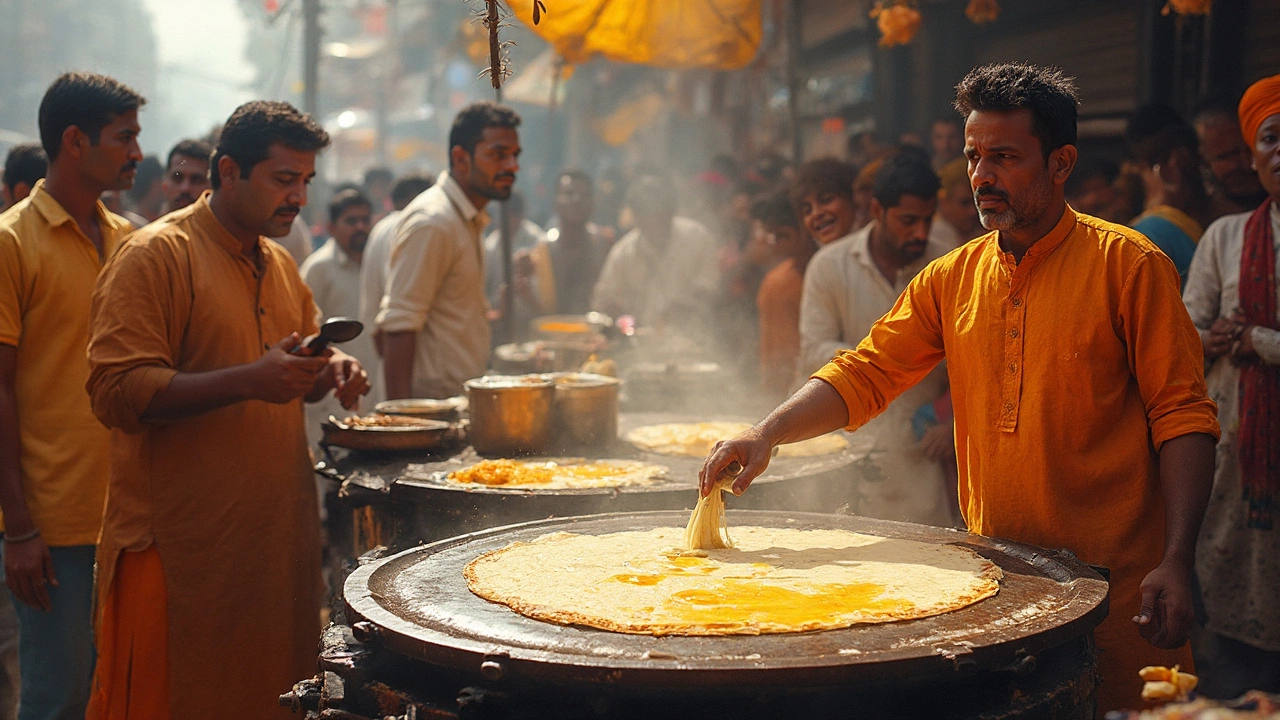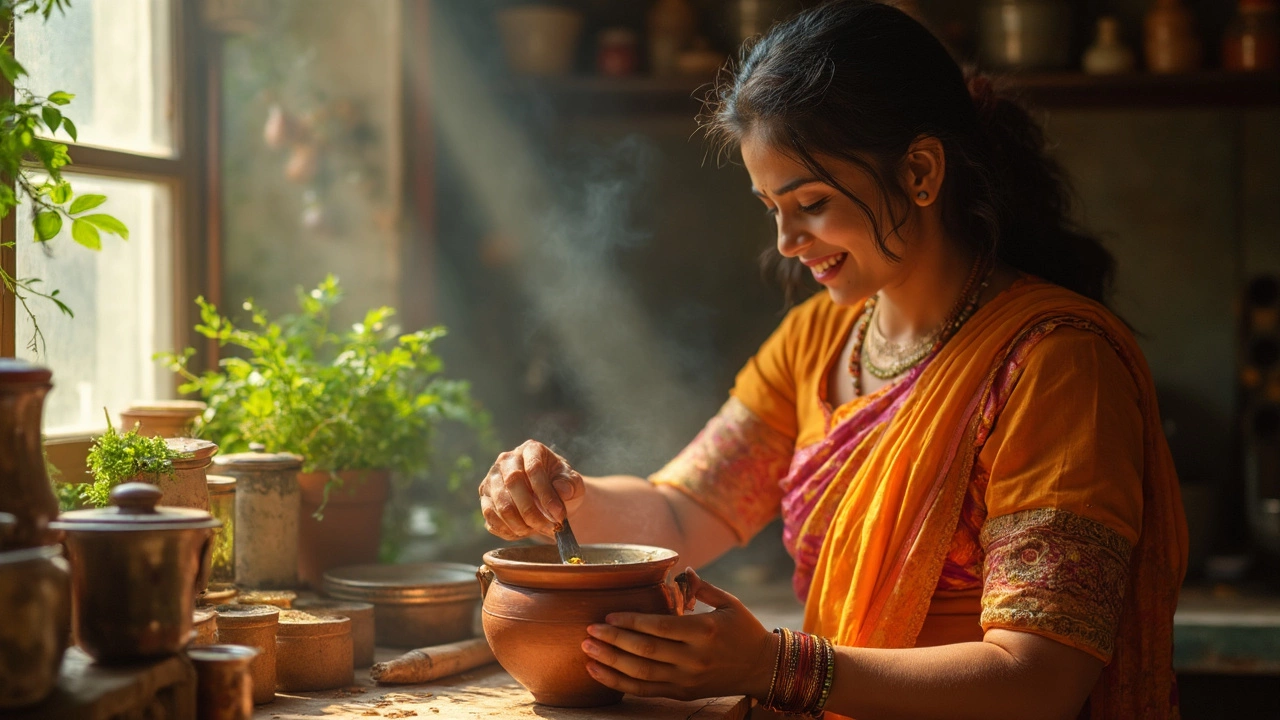Ever wonder why your dosa batter ends up rubbery instead of that beautifully crispy texture you're aiming for? Trust me, you're not alone on this one. Rubbery dosas can be a real bummer, but there are reasons behind this kitchen mystery, and with a few tweaks, you can nail that perfect batter consistency.
First things first, let's talk about fermentation. It's like magic for dosa batter. Under-fermented batter can lead to that dreaded rubbery feel. You want your batter to have those lovely bubbles throughout, which means it's light and airy. Temperature plays a huge role here. Too cold? Your batter might not ferment well. Too warm? It could over-ferment and turn sour.
- Common Causes of Rubbery Dosa Batter
- The Role of Fermentation
- Ingredient Ratios and Their Impact
- Tips for Perfect Texture
- Troubleshooting Rubberiness
Common Causes of Rubbery Dosa Batter
So, what's actually causing the rubbery texture in your dosa? There are a few usual suspects to consider, and getting them right can make all the difference.
First up, let’s talk ratios. A common mistake is not balancing the rice and urad dal properly. The general guideline is about 3 parts rice to 1 part urad dal, but you might find tweaking it to 4:1 gives a better result. The goal is to create a batter that's smooth and easy to spread.
Water content is another key factor. Too much water can mess up the consistency, while too little stops the dosa from having that nice spreadable batter we all love. A good test? Try dropping a little batter in water. If it floats, you're good to go.
Over-mixing your batter is another easy way to end up with rubbery dosas. Instead of whisking it into submission, try gently folding it a few times after the fermentation. This keeps the natural bubbles intact and adds to the batter's volume.
And hey, you can't forget about the importance of cooking temperature. Start with a super-hot pan, then lower it slightly before pouring the batter. This helps create that crispy layer without the inside going gummy or undercooked.
If you're still stuck, it can be helpful to keep a little cooking log to jot down any changes you make each time. Eventually, you’ll crack the code for your perfect dosa. After all, even little changes can make a big difference!
The Role of Fermentation
Fermentation is the heartbeat of a good dosa batter. Without the right fermentation, you're looking at disappointing, rubbery texture. The basic idea is to let the natural yeast in the air work its magic, making your batter rise and add that airy fluff.
Temperature is crucial. Leave the batter in a warm spot, where it can develop nicely. A ballpark figure? Around 30-32°C should do the trick. If you're somewhere really cold, try keeping it near a radiator or an oven with just the pilot light on.
Time is of the essence too, but this isn't a strict rule book. Generally, letting it rest for about 8-10 hours does the job. You'll know it's ready when the batter has doubled in size and is full of bubbles.
"Fermentation is an art, not just science," says renowned Indian chef Padma Lakshmi. "Treat it with patience, and it will reward you with the perfect dosa."
Remember, consistency matters. The batter should pour off a ladle smoothly, with a bit of resistance—not too thick, and definitely not too runny. If it's either, tweak your ingredient amounts next time you mix it up.
| Condition | Action |
|---|---|
| Too cold to ferment | Keep the batter in a warm spot or use a preheated oven (warm only, not hot) |
| Over-fermented | Add a little rice flour to tame the sourness and thicken the batter |
Once you've got the dosa batter perfect, get ready for some really delicious crispy results. It’s all about understanding the subtle dance of time, temperature, and ingredients. So, experiment a little and find what works best, because every kitchen is a little different!

Ingredient Ratios and Their Impact
Diving into the science of making great dosa batter, getting the right ingredient ratios is kind of a big deal. Seriously, even a small tweak can mean the difference between success and utter frustration.
Generally, the most common ratio people follow is 3:1 — three parts rice to one part urad dal. Now, don't get too stuck on that. Some folks swear by a 4:1 ratio. It’s not about strict precision, but rather how it suits your taste and gives you the texture you love. A little experimentation goes a long way.
Let’s lay it out simply:
- Rice: Choose a mixture of parboiled and raw rice. Parboiled rice helps with that golden color, while raw rice adds crispness.
- Urad Dal: Whole or split, keep it fresh. Old dal can make the batter dull and lifeless, affecting the fermentation.
- Fenugreek Seeds: Just a teaspoon can improve the batter texture and add a slight flavor boost.
Water is another sneaky factor. Too much water can make the batter thin and not hold together, while too little can make it overly thick and result in rubbery dosas. Aim for a slightly thick, yet pourable consistency.
Here's a little tip: some folks add a pinch of poha or flattened rice while grinding. It acts like a secret weapon for making dosas softer inside and crispy outside.
Remember, if your previous batch was too rubbery, take a step back and play around with the ratio. Jot down what you tried, taste, and adjust as you go. It's all about refining until you find what works for your taste buds and your skillet!
Tips for Perfect Texture
Getting that perfect dosa texture isn't just luck. It's a mix of the right ingredients and practices. Let's dive into some no-nonsense tips that can help you step up your dosa batter game.
First off, let's talk ingredients. Use a combination of regular rice and parboiled rice. The typical ratio? Two parts rice to one part urad dal usually works wonders. But hey, don't forget to throw in a tablespoon of fenugreek seeds. They're small but mighty in ensuring even fermentation.
Water quality and amount matter. Use filtered water, and when grinding, add water bit by bit. You're aiming for a batter that's thicker than pancake batter but flows slowly.
Fermentation is next. It's a real game-changer, and keeping your batter cozy is key. A simple trick? Wrap your batter bowl with a kitchen towel to maintain warmth if your kitchen is on the chilly side.
Now, for a pro tip: adding a pinch of sugar before fermenting can speed things up a bit, boosting the growth of those lovely fermentation bubbles.
When it's time to cook, mix the batter thoroughly. Those air bubbles can settle at the top, and you want a nice, even texture when spreading on the pan.
Ingredient Overview
| Ingredient | Importance | Recommended Quantity |
|---|---|---|
| Regular Rice | Base texture | 2 cups |
| Parboiled Rice | Helps in fermentation | 2 cups |
| Urad Dal | Lentil for batter body | 1 cup |
| Fenugreek Seeds | Aid fermentation | 1 tbsp |

Troubleshooting Rubberiness
Alright, so your dosa batter isn't quite playing nice and feels a bit on the chewy side – no worries! We're going to sleuth our way through this.
First off, double-check your ingredient ratios. The ratio of rice to urad dal usually sticks around 3:1. If you're using different measures, it might cause the texture to go a bit off the rails. Make sure you weigh or measure correctly to ensure consistency in every batch.
Keen on fermentation? Good, because it makes a world of difference. You'll want to ensure your batter has had enough time in a warm spot to develop those light, bubbly qualities. Generally, it takes around 8-12 hours in a room-temperature setting. But if it's chilly outside, you might consider placing it in the oven with just the light on.
Sometimes it's all about the grind. If possible, use a wet grinder instead of a mixer grinder. The dosa batter needs to be smooth yet airy, and a wet grinder tends to do a better job at this.
Let's talk about water content. Too much water can make your batter too runny, and too little can lead to stiffness. Aim for a medium consistency – not too thick, not too thin – something that easily coats the back of a spoon but doesn't drip right off.
Finally, once you're at the griddle, temperature is key. Let the pan heat up properly before pouring the batter. If it's not hot enough, the batter might not spread well, causing rubberiness.
With these tweaks, your journey toward making a crispy, perfect dosa should be smoother. When you get it right, both you and your taste buds will know!
